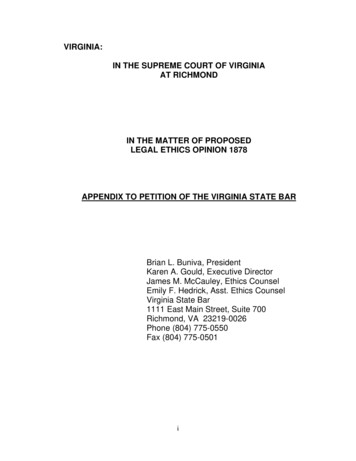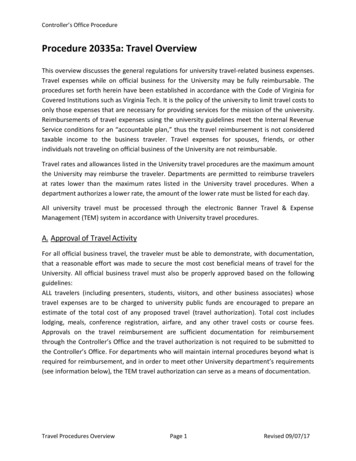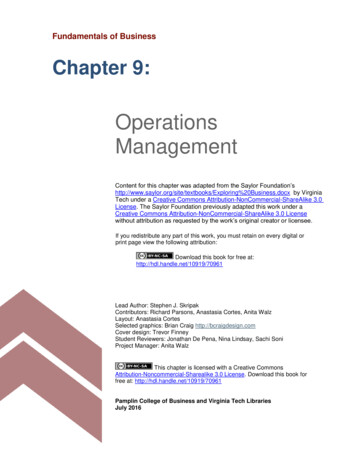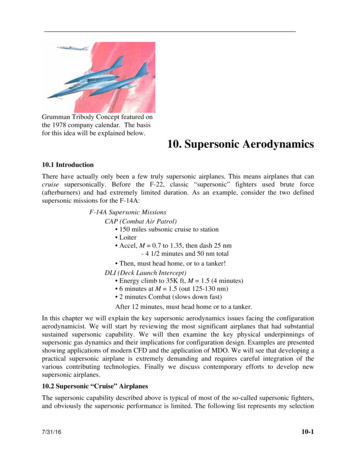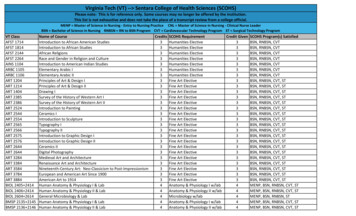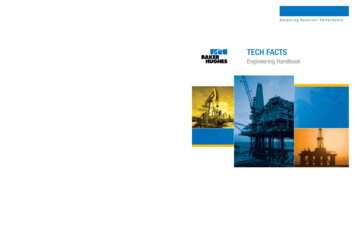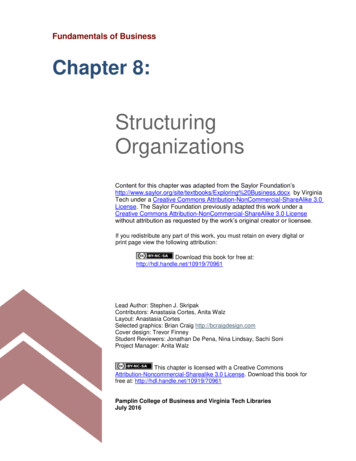
Transcription
Fundamentals of BusinessChapter 8:StructuringOrganizationsContent for this chapter was adapted from the Saylor /Exploring%20Business.docx by VirginiaTech under a Creative Commons Attribution-NonCommercial-ShareAlike 3.0License. The Saylor Foundation previously adapted this work under aCreative Commons Attribution-NonCommercial-ShareAlike 3.0 Licensewithout attribution as requested by the work’s original creator or licensee.If you redistribute any part of this work, you must retain on every digital orprint page view the following attribution:Download this book for free at:http://hdl.handle.net/10919/70961Lead Author: Stephen J. SkripakContributors: Anastasia Cortes, Anita WalzLayout: Anastasia CortesSelected graphics: Brian Craig http://bcraigdesign.comCover design: Trevor FinneyStudent Reviewers: Jonathan De Pena, Nina Lindsay, Sachi SoniProject Manager: Anita WalzThis chapter is licensed with a Creative CommonsAttribution-Noncommercial-Sharealike 3.0 License. Download this book forfree at: http://hdl.handle.net/10919/70961Pamplin College of Business and Virginia Tech LibrariesJuly 2016
Chapter 8Structuring OrganizationsLearning Objectives1) Identify the three levels of management and the responsibilitiesat each level.2) Discuss various options for organizing a business, and createan organization chart.3) Understand how specialization helps make organizations moreefficient.4) Discuss the different ways that an organization candepartmentalize.5) Explain other key terms related to this chapter such as chain ofcommand, delegation of authority, and span of control.184Download this book for free at:http://hdl.handle.net/10919/70961Chapter 8
OrganizingIf you read our chapter on Management and Leadership, you will recall developing astrategic plan for your new company, Notes-4-You. Once a business has completed theplanning process, it will need to organize the company so that it can implement that plan. Amanager engaged in organizing allocates resources (people, equipment, and money) toachieve a company’s objectives. Successful managers make sure that all the activitiesidentified in the planning process are assigned to some person, department, or team and thateveryone has the resources needed to perform assigned activities.Levels of Management: How Managers Are OrganizedA typical organization has several layers of management. Think of these layers asforming a pyramid like the one in Figure 8.1, with top managers occupying the narrow space atthe peak, first-line managers the broad base, and middle-managers the levels in between. AsFigure 8.1: Levels of ManagementChapter 8Download this book for free at:http://hdl.handle.net/10919/70961185
you move up the pyramid, management positions get more demanding, but they carry moreauthority and responsibility (along with more power, prestige, and pay). Top managers spendmost of their time in planning and decision making, while first-line managers focus on day-today operations. For obvious reasons, there are far more people with positions at the base ofthe pyramid than there are at the other two levels. Let’s look at each management level inmore detail.Top ManagersTop managers are responsible for the health and performance of the organization.They set the objectives, or performance targets, designed to direct all the activities that mustbe performed if the company is going to fulfill its mission. Top-level executives routinely scanthe external environment for opportunities and threats, and they redirect company efforts whenneeded. They spend a considerable portion of their time planning and making major decisions.They represent the company in important dealings with other businesses and governmentagencies, and they promote it to the public. Job titles at this level typically include chiefexecutive officer (CEO), chief financial officer (CFO), chief operating officer (COO), president,and vice president.Middle ManagersMiddle managers are in the center of the management hierarchy: they report to topmanagement and oversee the activities of first-line managers. They’re responsible fordeveloping and implementing activities and allocating the resources needed to achieve theobjectives set by top management. Common job titles include operations manager, divisionmanager, plant manager, and branch manager.First-Line ManagersFirst-line managers supervise employees and coordinate their activities to make surethat the work performed throughout the company is consistent with the plans of both top andmiddle management. It’s at this level that most people acquire their first managerialexperience. The job titles vary considerably but include such designations as manager, groupleader, office manager, foreman, and supervisor.186Download this book for free at:http://hdl.handle.net/10919/70961Chapter 8
Let’s take a quick survey of the management hierarchy at Notes-4-You. As president,you are a member of top management, and you’re responsible for the overall performance ofyour company. You spend much of your time setting performance targets, to ensure that thecompany meets the goals you’ve set for it— increased sales, higher-quality notes, and timelydistribution.Several middle managers report to you, including your operations manager. As a middlemanager, this individual focuses on implementing two of your objectives: producing highquality notes and distributing them to customers in a timely manner. To accomplish this task,the operations manager oversees the work of two first-line managers—the note-takingsupervisor and the copying supervisor. Each first-line manager supervises several nonmanagerial employees to make sure that their work is consistent with the plans devised by topand middle management.Organizational Structure:How Companies Get the Job DoneBuilding an organizational structure engages managers in two activities: jobspecialization (dividing tasks into jobs) and departmentalization (grouping jobs into units).An organizational structure outlines the various roles within an organizational, which positionsreport to which, and how an organization will departmentalize its work. Take note than anorganizational structure is an arrangement of positions that’s most appropriate for yourcompany at a specific point in time. Given the rapidly changing environment in whichbusinesses operate, a structure that works today might be outdated tomorrow. That’s why youhear so often about companies restructuring—altering existing organizational structures tobecome more competitive once conditions have changed. Let’s now look at how the processesof specialization and departmentalization are accomplished.Chapter 8Download this book for free at:http://hdl.handle.net/10919/70961187
SpecializationOrganizing activities into clusters of related tasks that can be handled by certainindividuals or groups is called specialization. This aspect of designing an organizationalstructure is twofold:1) Identify the activities that need to be performed in order to achieve organizationalgoals.2) Break down these activities into tasks that can be performed by individuals orgroups of employees.Specialization has several advantages. First and foremost, it leads to efficiency.Imagine a situation in which each department was responsible for paying its own invoices; aperson handling this function a few times a week would likely be far less efficient thansomeone whose job was to pay the bills. In addition to increasing efficiency, specializationresults in jobs that are easier to learn and roles that are clearer to employees. But theapproach has disadvantages, too. Doing the same thing over and over sometimes leads toboredom and may eventually leave employees dissatisfied with their jobs. Before long,companies may notice decreased performance and increased absenteeism and turnover (thepercentage of workers who leave an organization and must be replaced).DepartmentalizationThe next step in designing an organizational structure is departmentalization—grouping specialized jobs into meaningful units. Depending on the organization and the size ofthe work units, they may be called divisions, departments, or just plain groups.Traditional groupings of jobs result in different organizational structures, and for thesake of simplicity, we’ll focus on two types—functional and divisional organizations.Functional OrganizationsA functional organization groups together people who have comparable skills andperform similar tasks. This form of organization is fairly typical for small to medium-sizecompanies, which group their people by business functions: accountants are grouped together,as are people in finance, marketing and sales, human resources, production, and research and188Download this book for free at:http://hdl.handle.net/10919/70961Chapter 8
development. Each unit is headed by an individual with expertise in the unit’s particularfunction. Examples of typical functions in a business enterprise include human resources,operations, marketing, and finance. Also, business colleges will often organize according tofunctions found in a business.There are a number of advantages to the functional approach. The structure is simple tounderstand and enables the staff to specialize in particular areas; everyone in the marketinggroup would probably have similar interests and expertise. But homogeneity also hasdrawbacks: it can hinder communication and decision making between units and even promoteinterdepartmental conflict. The marketing department, for example, might butt heads with theaccounting department because marketers want to spend as much as possible on advertising,while accountants want to control costs.Divisional OrganizationsLarge companies often find it unruly to operate as one large unit under a functionalorganizational structure. Sheer size makes it difficult for managers to oversee operations andserve customers. To rectify this problem, most large companies are structured as divisionalorganizations. They are similar in many respects to stand-alone companies, except thatcertain common tasks, like legal work, tends to be centralized at the headquarters level. Eachdivision functions relatively autonomously because it contains most of the functional expertise(production, marketing, accounting, finance, human resources) needed to meet its objectives.The challenge is to find the most appropriate way of structuring operations to achieve overallcompany goals. Toward this end, divisions can be formed according to products, customers,processes, or geography.Product DivisionsProduct division means that a company is structured according to its product lines.General Motors, for example, has four product-based divisions: Buick, Cadillac, Chevrolet, andGMC.1 Each division has its own research and development group, its own manufacturingoperations, and its own marketing team. This allows individuals in the division to focus all theirefforts on the products produced by their division. A downside is that it results in higher costsas corporate support services (such as accounting and human resources) are duplicated ineach of the four divisions.Chapter 8Download this book for free at:http://hdl.handle.net/10919/70961189
Customer DivisionsSome companies prefer a customer division structure because it enables them tobetter serve their various categories of customers. Thus, Johnson & Johnson’s two hundred orso operating companies are grouped into three customer-based business segments: consumerbusiness (personal-care and hygiene products sold to the general public), pharmaceuticals(prescription drugs sold to pharmacies), and professional business (medical devices anddiagnostics products used by physicians, optometrists, hospitals, laboratories, and clinics).2Process DivisionsIf goods move through several steps during production, a company might opt for aprocess division structure. This form works well at Bowater Thunder Bay, a Canadiancompany that harvests trees and processes wood into newsprint and pulp. The first step in theproduction process is harvesting and stripping trees. Then, large logs are sold to lumber millsand smaller logs are chopped up and sent to Bowater’s mills. At the mill, wood chips arechemically converted into pulp. About 90 percent is sold to other manufacturers (as rawmaterial for home and office products), and the remaining 10 percent is further processed intonewspaper print. Bowater, then, has three divisions: tree cutting, chemical processing, andfinishing (which makes newsprint).3Geographical DivisionsGeographical divisionFigure 8.2: Adidas Group geographic divisionsenables companies that operate inseveral locations to be responsive tocustomers at a local level. Adidas, forexample, is organized according tothe regions of the world in which itoperates. They have eight differentregions, and each one reports itsperformance separately in theirannual reports.4190Download this book for free at:http://hdl.handle.net/10919/70961Chapter 8
Summing Up Divisional OrganizationsThere are pluses and minuses associated with divisional organization. On the one hand,divisional structure usually enhances the ability to respond to changes in a firm’s environment.If, on the other hand, services must be duplicated across units, costs will be higher. In addition,some companies have found that units tend to focus on their own needs and goals at theexpense of the organization as a whole.The Organization ChartOnce an organization has set its structure, it can represent that structure in anorganization chart: a diagram delineating the interrelationships of positions within theorganization. An example organization chart is shown in Figure 8.3, using our “Notes-4-You”example from Chapter 7.Figure 8.3: An organizational chart for “Notes-4-You”Imagine putting yourself at the top of the chart, as the company’s president. You wouldthen fill in the level directly below your name with the names and positions of
This aspect of designing an organizational structure is twofold: 1) Identify the activities that need to be performed in order to achieve organizational goals. 2) Break down these activities into tasks that can be performed by individuals or groups of employees. Specialization has several advantages. First and foremost, it leads to efficiency.
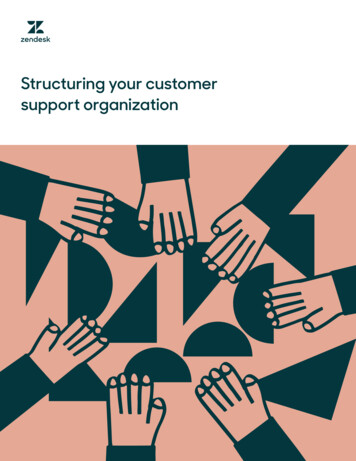
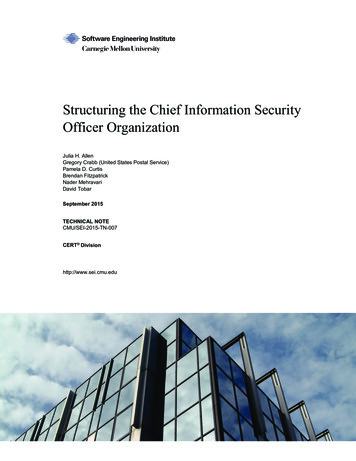
![Upskilling and Structuring [Teams] for Predictive Analytics](/img/11/pd-2018-insurtech-session-6.jpg)


